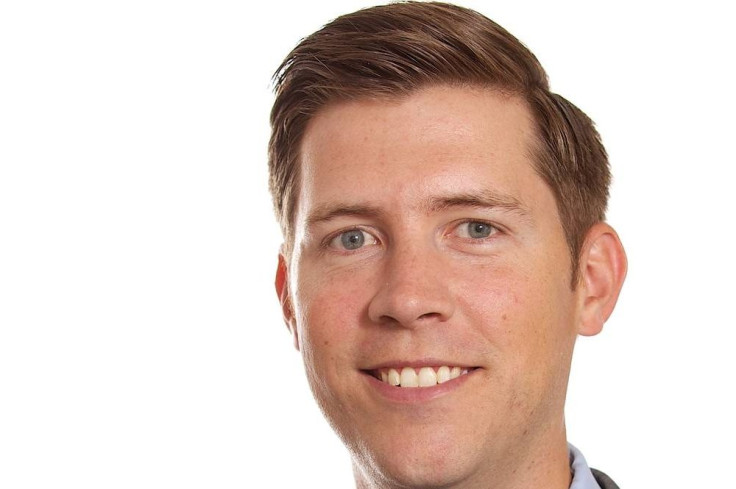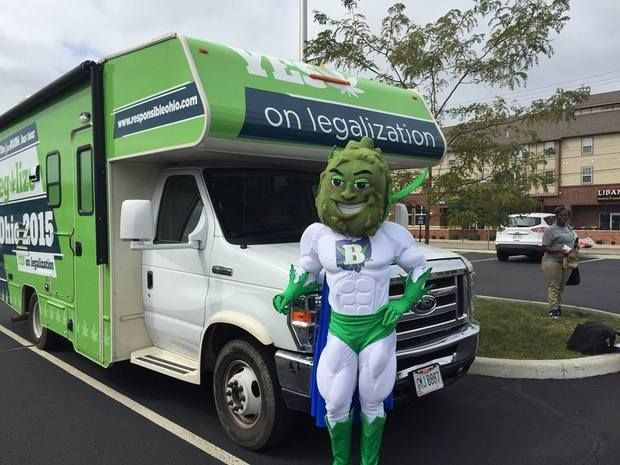Marijuana Legalization 2015: Major Pot Activist Quits Marijuana Policy Project, Says Industry Is Taking Over Movement

November was a dizzying month in the marijuana movement, one whose impact will be felt for years to come. California inched closer to full legalization with the unveiling of a well-funded, heavily endorsed 2016 ballot initiative. Democratic presidential hopeful Bernie Sanders introduced a landmark Senate bill that would end federal marijuana prohibition, a move that likely encouraged his opponent, Hillary Clinton, to soften her stance on cannabis, too. Mexico’s Supreme Court ruled in favor of personal marijuana use, a ruling that could move the country towards recreational marijuana (although likely not as quickly as Canada). And Ohio voters considered – and rejected – an ambitious yet controversial legalization initiative that would have made the bellwether state the largest recreational marijuana market in the country.
But one of the most telling developments didn’t capture any headlines. That was the announcement that Dan Riffle, federal policy director for the powerful national advocacy group Marijuana Policy Project (MPP) and one of the most outspoken advocates of cannabis legalization, was quitting his job. As Riffle noted in an email to colleagues in early November, the "industry is taking over the legalization movement and I’m not interested in the industry.” That same day, MPP announced a new political campaign funded by marijuana industry revenues.
The two announcements weren’t completely a coincidence.
“I think it is a pretty stark example of the kinds of things I was concerned about and that were the reasons why I left,” says Riffle of MPP’s new funding campaign. “I felt for the last few months the industry was kind of dominating the legalization movement’s work in general, and MPP’s specifically.”
While Riffle concedes that business has long mixed with politics in this country, he’s concerned that the substance at the center of this particular movement is an intoxicating drug. While that drug might not be as dangerous as say, alcohol or tobacco, there might be societal benefits to limiting access to the product, restricting potency and disincentivizing heavy use – approaches that are likely to clash with for-profit interests. “They might lobby for preferential tax treatment that drives down prices, they might lobby for less regulation,” says Riffle. “The industry’s goal is to make money, but from a public health perspective, we might have other goals that are at odds with the industry’s goal of making money.”

Riffle isn’t the only one troubled about the future of the marijuana movement. When the divisive Ohio legalization effort bombed at the polls, marijuana critics and supporters alike hailed the development as a victory. But the specter of the failed initiative will likely haunt the cannabis scene for a long time. Looking back, people may see what happened in Ohio as a turning point in the cannabis crusade, the moment when the national dialogue around legalization fundamentally shifted -- in ways that might not bode well for marijuana advocacy.
That’s because the Ohio initiative, in the starkest possible terms, hammered home the growing role that big-money interests have assumed in the legalization movement. The investment groups behind the Ohio plan, all of which were new to marijuana advocacy, together donated upwards of $25 million to the campaign, nearly 10 times what activists spent to legalization marijuana in Colorado. For their efforts, they stood to dominate an estimated $1 billion-plus state industry.
It’s not that big business hasn’t been seeping into marijuana industries in other parts of the country. In many of the new medical marijuana systems launching in various states, the only dispensary operators who can afford the six-figure application fees and multi-million-dollar performance bonds required are those that already boast hefty financial assets. And in recreational markets like Colorado, mom-and-pop cannabis operations are going out of business as those who are left consolidate the spoils into statewide chains. But most of these developments went unremarked. The Ohio plan was so audacious, so transparent in its corporate machinations, that it was no longer possible for those both inside and outside the marijuana movement to look the other way.
Now, suddenly, media outlets are reporting on the rise of “Big Pot.” Longtime marijuana reform activists like Ethan Nadelmann, founder of the Drug Policy Alliance, have declared, “We're entering a new era of marijuana law reform in which the influence of funders and organizations driven primarily by concerns for civil rights and personal liberties, and not by any financial interest in legalizing marijuana, will be superseded by people and corporations driven largely by their pursuit of legal profits.”

We’re seeing that new era take hold among the dozen-plus legalization and medical marijuana initiatives being readied for the 2016 election cycle. The California marijuana campaign unveiled last month is being hailed as the state’s best shot at legalization among a crowded political field (nine other legalization initiatives have also been filed with the state), largely because it’s reportedly being bankrolled by tech billionaire Sean Parker and other major business interests. Plans for a legalization initiative in Nevada, which would build off a new medical marijuana industry designed to cater to out-of-state tourists, were on the agenda several weeks ago when marijuana power players converged on Las Vegas for the country’s largest marijuana business conference. And if the Marijuana Policy Project, as it has in the past, helps coordinate other marijuana movements around the country, money for these efforts will come from its new industry funded political campaign.
Corporate interests, in other words, are on track to finance the future of marijuana legalization. Will they also get to decide what legalization looks like?
Maybe when it comes to marijuana, politics can’t help joining forces with big business. After all, the signature drives and political campaigns necessary for such efforts to succeed don’t come cheap. Plus, cannabis reform is different from other social movements. Nationwide same-sex marriage didn’t require the creation of a whole new infrastructure of wedding-dress factories, bridal shops and cake bakers. Nationwide marijuana access, on the other hand, needs this sort of development -- and somebody has to pay for it. It’s telling that the only national marijuana organization to officially endorse Ohio’s so-called “marijuana monopoly” legalization plan was the oldest – the National Organization for the Reform of Marijuana Laws, founded in 1970. Maybe that’s because NORML has been around long enough, seen enough victories and defeats, to know that sometimes getting in bed with corporate interests is the only realistic way to go.
But that doesn’t mean that all of the movement’s core values will translate easily as its driving principles shift from civil liberties to business bottom lines. Will there be continued interest in helping nonviolent marijuana offenders erase harsh drug-war convictions from their records? In allowing struggling war veterans and desperately sick kids to obtain not just legal but affordable access to the medical marijuana? In protecting the interests of the small marijuana farmers in places like California’s Emerald Triangle whose decades of legally perilous efforts helped launch the marijuana movement in the first place? In ensuring that those who don’t necessarily need unfettered access to cannabis – like youth and problem users – are protected from its adverse effects?
It’s possible, though, that marijuana legalization doesn’t have to be just about profits. If cannabis advocates are to be believed, the Ohio election demonstrates that voters want legalization, but not when it’s a blatant money grab. And it’s worth noting that Sanders’ groundbreaking marijuana bill, which would decriminalize marijuana at the federal level and allow states to legalize and regulate the drug as they see fit, largely mirrors the repeal of Prohibition in 1933, which removed the federal alcohol ban but allowed individual states to choose to remain dry. But the end of Prohibition came with a caveat: The alcohol industry was divided into a three-tiered system in which production, distribution and retail of the product were all managed by different business interests. The idea was to limit corporate monopoly and control of an intoxicating product – and the same idea could factor into the nationwide legalization of marijuana.
Riffle, for one, doesn’t think the future of marijuana has to be dominated by for-profit interests and monopolies. It’s why in his new job, working for Rep. John Conyers, the ranking Democrat on the House Judiciary Committee, he aims to help explore other models for legalized cannabis, including nonprofit models and government-run monopolies, the way that some states manage alcohol.
“Legalization is inevitable,” says Riffle. “But [people] haven’t put time into forming an alternative to the corporate model. That is something I’d like to work on… We don’t really know what the best policies are, and anyone who says they do is blowing smoke.”
© Copyright IBTimes 2024. All rights reserved.






















